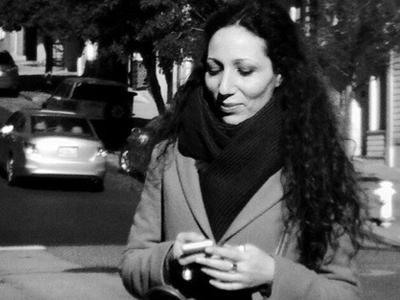%20Pedro%20brito%20Da%20Fonseca_800x600px.jpg)
Van Kempen’s work Lady Liberty, which symbolically recalls the crown of the Statue of Liberty in New York as a symbol of democracy, freedom, and opportunity, was this year’s manifesto for Nuda Vita. The exhibition, in its second edition, aims to be an artistic movement, an open and continuous platform of reflection and stimulation to give substance to those studies that see the body as an area of exploration, and present jewelry as a device capable of triggering unprecedented dynamics of sense, inquiring on the themes of being and of existence.
Current political, social, and health circumstances have fostered a global reflection on the ethics of our actions and lifestyles, moving our consciences with respect to various current and delicate issues, such as the management of death by governments, the lack of public assistance in some countries, and difficult access to healthcare, even in the most advanced countries in the world. It’s therefore worth asking ourselves a few questions about the role of art and the artist today, about how they can convey messages, activating unprecedented creative practices.
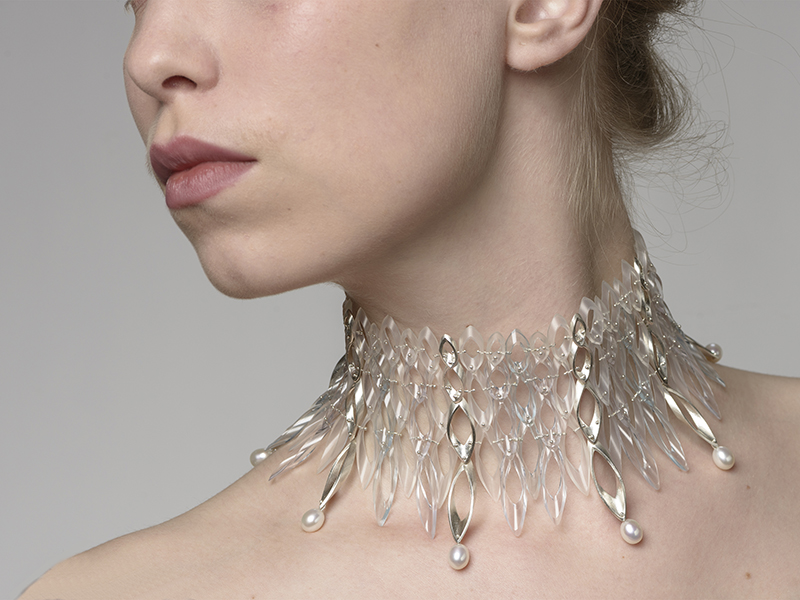
The connection between ethics and aesthetics has been one of the fundamental issues of speculative thought ever since the birth of philosophy, and contemporary research seems increasingly interested in legitimizing the application of ethical categories for the analysis of problems or aesthetic objects, such as the status of a work of art, the artistic action, the “educational” effects of art on the public.
But what do ethics and aesthetics mean in an environment dominated by the image, and therefore in lives that are completely aestheticized (projected outward, toward the outside world)? What is their relationship for individuals who, considered just as passive consumers, are laboriously searching for their own meaning, in the private and public dimension? First, let’s define these terms, with Professor Giuseppe O. Longo as our guide[1]:
- Aesthetics is the subjective (but shared) perception of our bond with the environment, characterized by a deep and balanced dynamic harmony
- Ethics is the ability, both subjective and intersubjective, to conceive and perform actions capable of keeping a healthy and balanced link with the environment
Ethics and aesthetics are therefore two sides of the same coin, since they derive from the evolutionary co-implication between species and environment, and are both “mirrors” in us of this co-evolution.
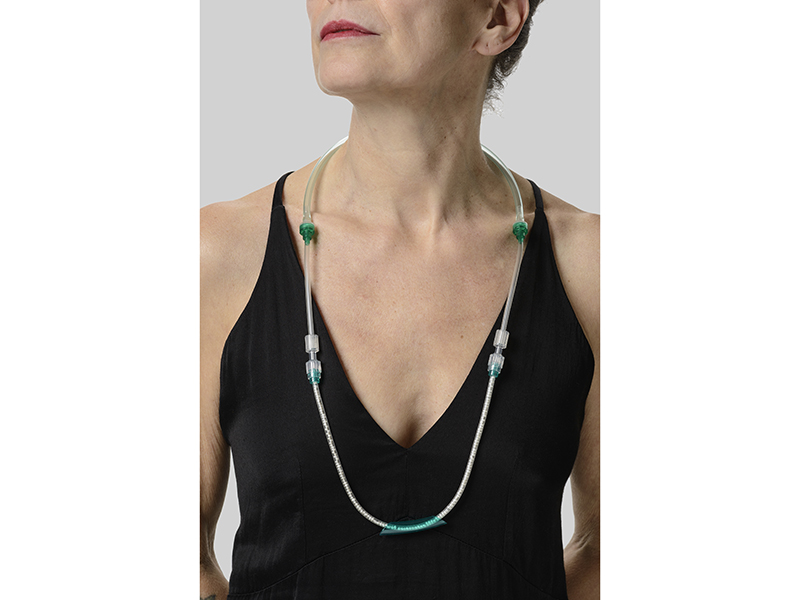
In this dynamic mirroring between the ethical and aesthetic experience of the world, the body has a central role. The body is fundamental and indispensable in all of the subject’s relations to the world, thus leading both of these experiences.
In this regard, Eva van Kempen’s artistic research is particularly significant because it combines the artistic dimension with both critical discourse and political provocation. Precisely because of this balance and union between the different dimensions of art and political activism, this Dutch goldsmith and jewelry designer, based in Amsterdam, chooses to define herself as an artivist.
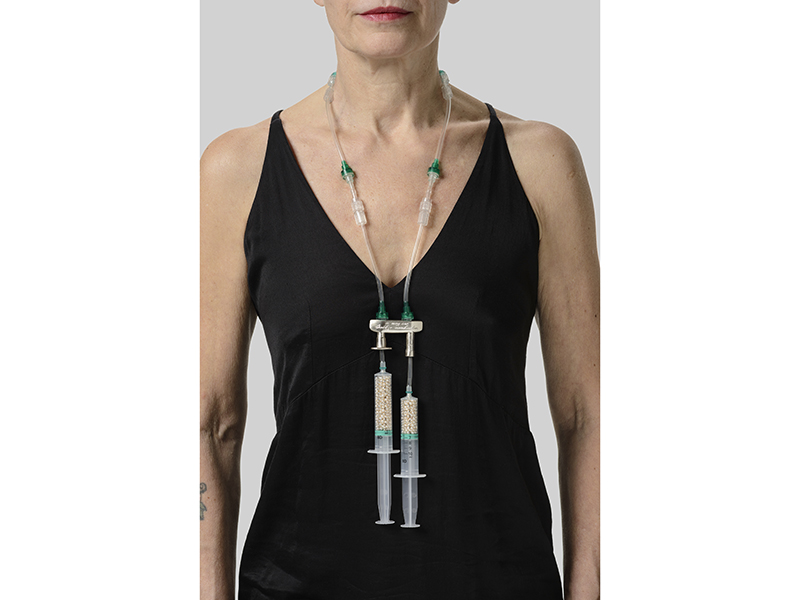
After surviving a serious disease, van Kempen became fascinated by what manmade medical materials and medicine can mean for a human life and for humanity as a whole. She feels that these materials, designed for the human body, have the perfect scale to become jewels. Driven by an urge to reanimate safe hospital waste—outdated intravenous systems, syringes, and expired medicine—van Kempen aims to honor these materials. The works invite the viewer to look with new eyes and rethink prevailing notions on medical materials, societal issues, or even humanitarian ones.
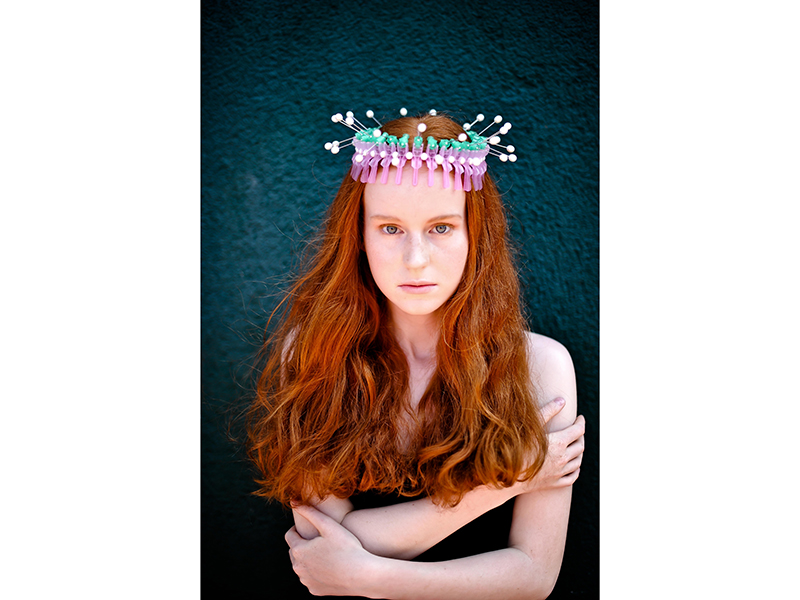
In her latest pieces, especially, she analyzes the impact of regulation on the recent control humans have over fertility: abortion laws, which, both individually and collectively, represent one of the key elements in the thermometer of a democracy and the respect for human rights.
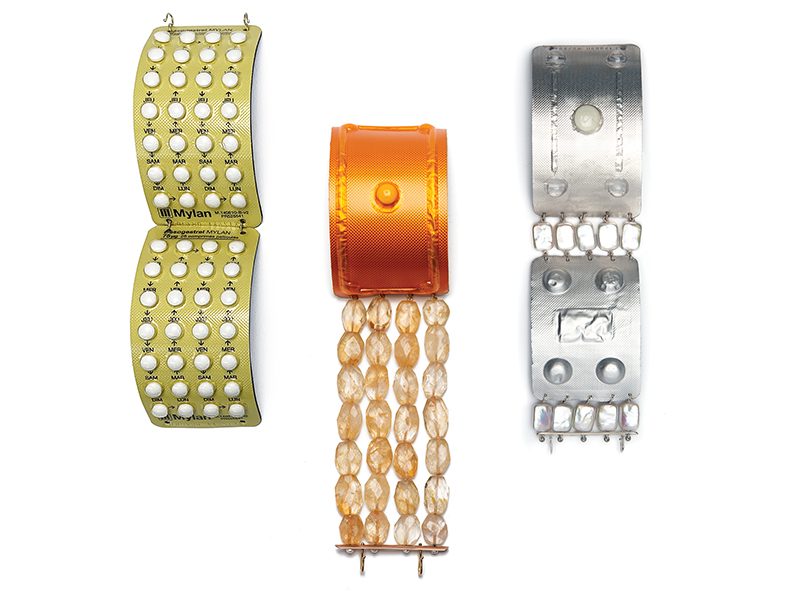
Trained as a goldsmith, van Kempen then opened up to a more experimental language by mixing the aesthetics of the medical industry and that of traditional goldsmithing in an original way. Her use of packs of expired pills such as contraceptive pills, morning-after pills, and abortion pills to make jewelry creates a semantic short circuit, the outcome of which is as effective as it is ingenious. At first glance it’s difficult to focus on the material, as it’s used wisely and with great aesthetic acumen. The colors and the harmonic compositions of the elements give the pieces a strong decorative impact, which deflects and deviates from the content.
Van Kempen uses the medical waste materials as if they were valuable gems in traditional high-end jewelry lines, to reach a broader audience than just contemporary jewelry enthusiasts. Both the technique and the process of making were born after years of experimenting, basically by trial and error. The general fascination with the visual language of medicine and its packaging, with its almost cultic medical aesthetics, started while she was hospitalized. Like an epiphany, she found comfort in the beauty of the materials and elaborated the way to reanimate and restore them for what they could have meant for a human life. The resulting work aims to celebrate the value of life in a woman’s full mastery of her body, and a wish for free and easy access to these medicines, which must not be the privilege of a few, but the right of all.
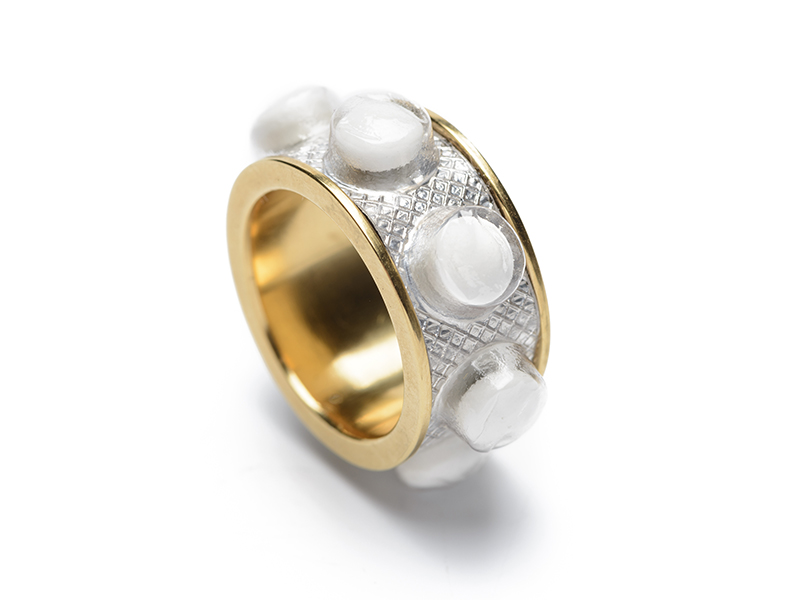
A concrete example of van Kempen’s artistic practice is given in the creation of the work Lady Liberty. The crown symbolically recalls the crown of the Statue of Liberty, in New York, as a symbol of democracy, freedom, and opportunity. Made of expired abortion pill packs for the exhibition Nuda Vita, it supports the right to freely get access to abortion care.[2]
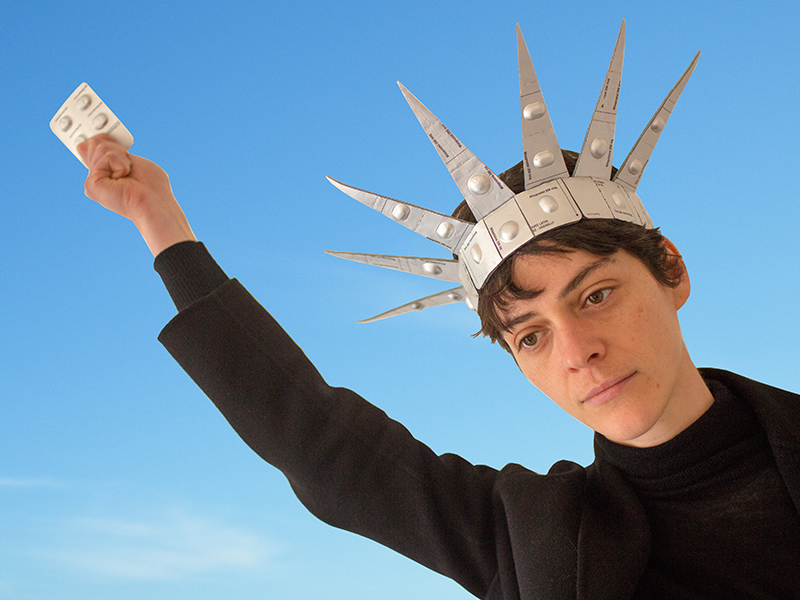
Together with Women on Waves[3] and in support of abortion rights, van Kempen launched the Lady Liberty Abortion Pill Crown as an Instagram face filter, designed by augmented-reality artist Chloe Karayiannis. When you open your mouth, the abortion pills are released from the crown.

The idea was to create an awareness campaign on social media in order to make the Lady Liberty face filter go viral and generate a global digital protest. It was to launch March 1, 2020, just a few days before the most high-profile abortion rights case in the US in decades. Unfortunately, Instagram first rejected the filter, then, after pressure by the artist, placed conditions of realization that would have completely compromised the sense and strength of the artistic gesture, including the impossibility of inserting the message “Liberate abortion pills,” which was associated with the filter. Instagram mentioned article 4.3.c. of its terms of use as a reason for rejection of the face filter; it states, “Content must not promote alcohol, tobacco, marijuana, or pharmaceutical medical products, nor be published by brands associated with such products.”
Van Kempen explains what happened: “As we wanted the face filter up and running by March 1, a few days before the Supreme Court Case, we appealed the rejection. At the same time, Rebecca Gomperts [the founder of Women on Waves] launched a press release,[4] denouncing the censorship by Instagram, which generated international attention: on March 3, 2020, Vice published an article by Marie Solis, “Instagram Rejected a Pro-Choice Face Filter,”[5] and in the two days that followed, the article was republished in the UK (Vice and Dazed), Australia (Vice), Germany (Noizz), Greece (Marie Claire), and Poland (Hiro). Between March 4 and March 10, I got multiple phone calls and private messages on Instagram by an employee … He seemed very well trained on the soft skills to politely but surely try to manipulate me into compromising on the way the face filter looks and works, as well as on trying to get me to leave out the integrated message ‘Liberate abortion pills.’ Ultimately, he pushed to leave the word ‘pills’ out of the integrated sentence, obviously knowing that ‘Liberate abortion’ doesn’t mean anything.

“Without my permission he … sent me examples of how the face filter would look after the changes, and that he could put it live straight away if only I agreed to the changes that he had made to our design. He knew that we were interested to have it up between March 4, the day of the Supreme Court case, and March 8, International Women’s Day. … it all felt like he was using a proven manipulation tactic while delaying the process and was waiting to see if we would sue, which we didn’t. Our reaction remained the same: The sentence ‘Liberate abortion pills’ is not promoting a medical product. It does not mention the names of the pills. It is similar to saying ‘Cancer treatment should be for free.’” For the artist herself and for Rebecca Gomperts, accepting this change would have meant agreeing to censorship.
Van Kempen goes on: “Rebecca and I came up with this virtual campaign to specifically reach a younger audience in order to make youngsters become aware and think about the current political situation and the impact it might have on reproductive rights in the near future in the US. Face filters are especially suitable for Instagram and they appeal to youngsters more than they do to people our own age and over, who are more on Facebook and might not understand this new application, as it is quite abstract. After it was rejected by Instagram, it did get approved for use on Facebook for a little while, which is strange as it is basically the same company. Obviously the company knows that Facebook isn’t so visually oriented like Instagram, neither is the audience prone to use it, hence the campaign lost its strength, which was obviously the aim of the social media giants. At one point and without any notice, it was also taken down by Facebook.”
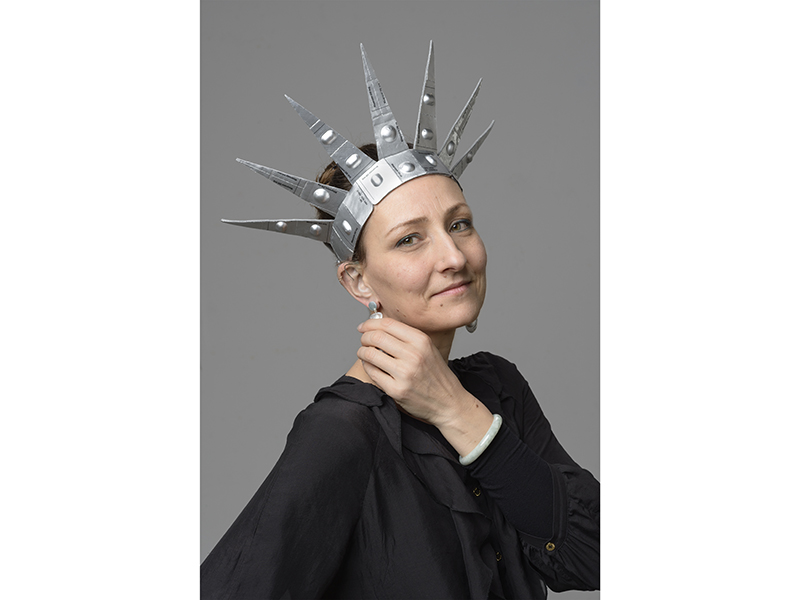
A further very interesting topic of reflection could be opened on this aspect, which is that of the relationship between social media and art: How is art conveyed through these platforms? How much do social media platforms condition both artistic practice and expressive freedom?
Without wanting to go too far down this path, and returning to van Kempen’s artistic practice, the union of political and social provocation with the artistic, digital, and material gesture in the creation of the crown represent the perfect combination of artistic ideology and creative thinking capable of inspiring consciences. The jewel becomes an artistic device and conveys, through the body, a new, inquisitorial message about our reality and history. Therefore, closing with a note on the relationship between ethics and aesthetics: If the body represents our sensory, cognitive, and value-driven experience, then in the body we will find the answer to many questions, and thus the more harmonious and unitary our experience of the world will be, and the more harmonious our relationship with society and its structures will be.
[1] From the article “Ethics, Aesthetics, and Free Will,” by Giuseppe O. Longo, published May 17, 2010, on scienzainrete.it.
[2] From Women on Web: “An abortion with pills at home is very safe and has the same health impact as a spontaneous miscarriage. The risk of an abortion with medicines is similar to the risks of commonly prescribed medicines and over-the-counter medication such as antibiotics and some painkillers. However in countries like the USA access to abortion pills is extremely restricted and research showed that cost of the abortion, distance to the clinic, problems with childcare, obligations from work and school, psychiatric illnesses, domestic violence, and concerns about privacy already cause severe obstacles to access abortion care. By making abortion pills available in pharmacies, the obstacles to access abortion services can be solved.”
[3] Women on Waves (WoW) is a Dutch nonprofit organization for free choice, for women’s rights, created in 1999 by the Dutch Rebecca Gomperts and Bart Terwiel. The purpose of this association is to provide services related to reproductive health, in particular nonsurgical methods of voluntary termination of pregnancy, to women in countries with restrictive abortion laws.
